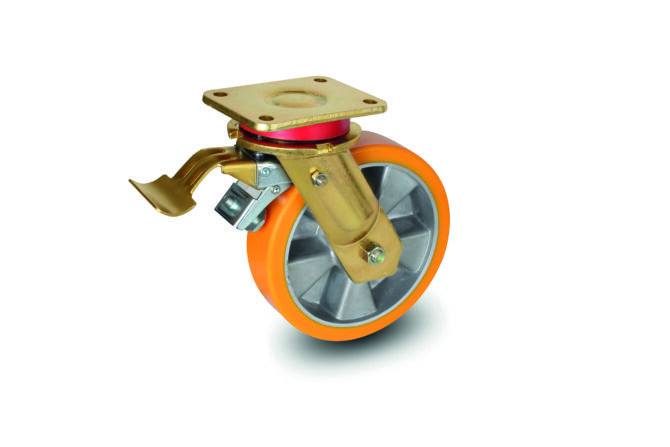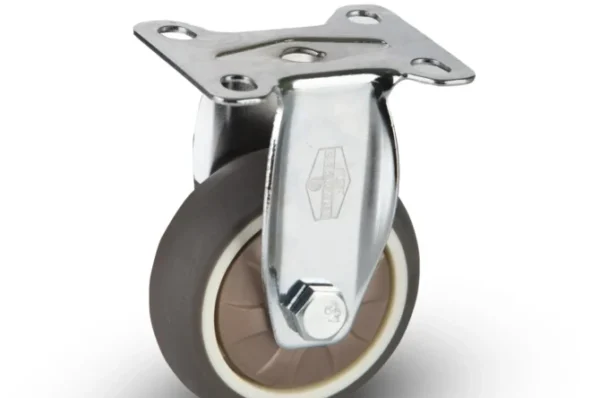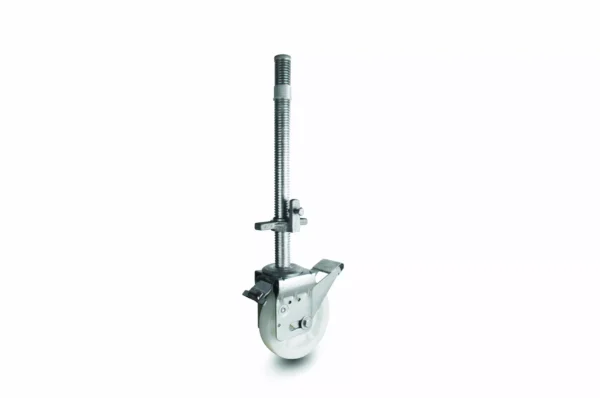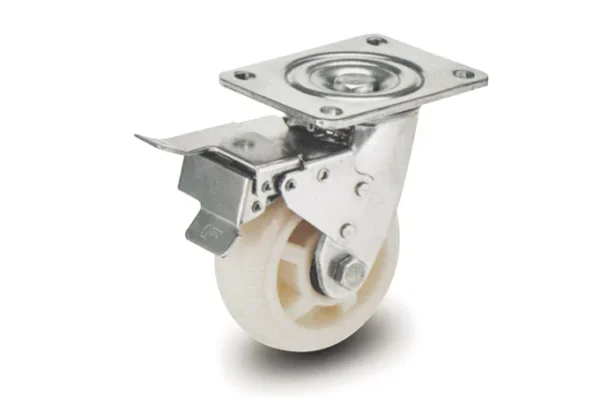Industrial mobility is not limited to moving a piece of equipment from one direction to the other, it is also about accuracy, safety, and stability under extreme pressure. Extra Heavy Duty Casters are considered the basis of movement efficacy in warehouses, factories, and construction sites. These specialty wheels move heavy loads, carry big machines, and provide smooth movement of the same on the harshest of surfaces.
The Role of Heavy-Duty Mobility Solutions
Any industrial environment depends on movement, be it the shifting of raw materials, manipulating the positions of the machines or the transportation of finished products. Extra Heavy Duty Casters are constructed unlike the common wheels with reinforced frames, large treads and superior bearing systems to avoid deformation under pressure. The way they are designed makes them stable, controllable, and long-lasting; features that are important in a setting where downtime is an expensive affair.
These casters are very important in safeguarding the load, and floor as well as the operator. The trade-off between strength and flexibility helps them to maintain their performance in the strong mechanical stress case and they are therefore an important element of high high-capacity mobility system.
Why Bearing Technology Matters
Smooth motion under heavy load depends largely on bearing precision. This is where heavy duty ball bearing casters stand out. The ball bearings minimize friction, allowing for effortless movement even when handling several tons of weight. These casters maintain consistent performance across repetitive tasks, reducing strain on workers and extending the life of both the caster and the equipment.
Ball bearing designs are especially valuable in manufacturing plants and logistics centers where mobility must be both strong and controlled. The even load distribution ensures stability, while their precision engineering reduces vibration and noise — two elements vital for maintaining safe and efficient workflows.
Durability Meets Versatility
Industrial floors vary from smooth concrete to rough outdoor terrain. That’s where the adaptability of Extra Heavy Duty Casters shines. Their robust construction allows them to transition between surfaces without compromising stability or traction.
For outdoor or rugged applications, heavy duty pneumatic casters offer superior performance. Their air-filled tires absorb shock and vibration, protecting both the load and flooring. These casters perform exceptionally well on uneven ground, gravel, or asphalt, making them indispensable for construction and maintenance equipment.
In contrast, solid-wheel variants are ideal for indoor industrial environments where smooth and consistent motion is required. Together, these different caster types ensure versatility across industries and applications.
Key Considerations When Selecting Casters
Choosing the right caster involves more than matching size or weight limits. A thoughtful selection ensures safety, productivity, and long-term reliability.
- Load Capacity: Always calculate total weight (equipment + contents) and divide by the number of casters to find the required load per wheel.
- Floor Type: Soft rubber treads are ideal for delicate flooring, while harder materials perform better on rough or uneven surfaces.
- Mobility Requirements: Fixed casters support straight-line motion, while swivel types offer greater maneuverability.
- Environmental Conditions: Consider exposure to moisture, chemicals, or temperature fluctuations.
- Braking Options: Locking systems enhance safety, especially for stationary machinery or elevated platforms.
The correct choice directly influences operational efficiency and equipment life — making caster selection a strategic decision, not just a mechanical one.
Engineering for Reliability
High-performance casters are built to endure years of continuous use. The design behind Extra Heavy Duty Casters often includes reinforced steel housings, double ball raceways, and high-grade treads that resist flattening and wear. These engineering choices prevent common issues like caster lock, wobbling, or uneven rolling — problems that can slow down industrial processes.
In applications like aircraft assembly, automotive production, or large-scale warehousing, consistency is critical. A single malfunctioning wheel can disrupt workflow or cause safety hazards. Investing in precision-engineered casters prevents these risks and reduces long-term maintenance costs.
Maintenance for Maximum Performance
Even the strongest components require upkeep. Regular cleaning removes debris that can restrict rotation. Bearings should be lubricated periodically to ensure smooth motion — especially in heavy duty ball bearing casters, where continuous friction can degrade performance over time.
For outdoor operations, checking air pressure and tread condition is essential for heavy duty pneumatic casters. Any imbalance may affect rolling efficiency and increase wear on other parts. Routine inspections guarantee continued safety and optimal function, especially in high-traffic or heavy-load environments.
Common Pitfalls in Industrial Mobility
While casters seem simple, misuse can lead to serious issues. Overloading, uneven weight distribution, or installing too few casters are common mistakes that shorten equipment lifespan. Choosing the wrong material for your floor type can cause scratches, vibrations, and even accidents.
Avoiding these pitfalls ensures smoother workflows, reduced downtime, and a safer working environment. It also highlights the importance of consulting specialists who understand how to match caster performance with operational needs.
Balancing Strength and Efficiency
Contemporary industries require a precise balance between power and accuracy. These specialized caster systems provide this harmony by supporting substantial loads while ensuring smooth, controlled movement. When incorporated into production or logistics operations, they enhance efficiency, ergonomics, and workplace safety.
The right caster setup minimizes manual effort, prevents equipment strain, and enhances maneuverability. Over time, this translates into improved productivity and lower operational costs — benefits every industrial manager values.
Future of Heavy-Duty Caster Technology
With industries evolving toward automation and smart logistics, caster technology continues to advance. Materials such as thermoplastic elastomers and advanced polyurethane compounds are replacing traditional metals, providing lighter yet stronger options. Hybrid models that combine pneumatic flexibility with solid durability are also gaining traction.
These innovations make Extra Heavy Duty Casters more efficient, adaptable, and sustainable. As factories adopt automated guided vehicles (AGVs) and modular workstations, reliable caster systems will remain central to mobility engineering.
The Go Casters Standard
At Go Casters, the focus is on creating mobility components that exceed industrial expectations. By combining strength, design precision, and quality materials, the company’s range of Extra Heavy Duty Casters supports diverse industries — from logistics and manufacturing to construction and aerospace. Whether using heavy duty ball bearing casters for high-precision environments or heavy duty pneumatic casters for outdoor durability, Go Casters delivers solutions that prioritize safety, stability, and performance.
Reliable movement drives productivity — and with the right caster, even the heaviest equipment moves with ease, precision, and confidence.




